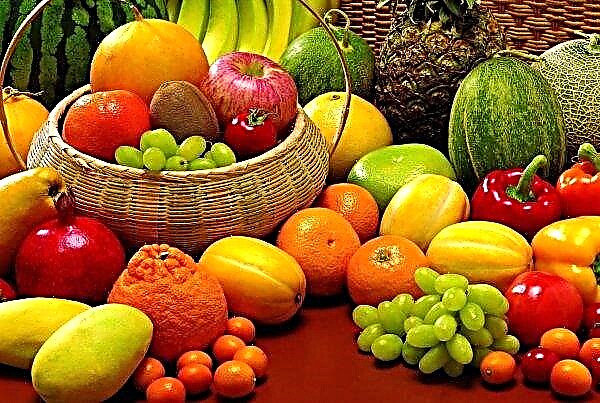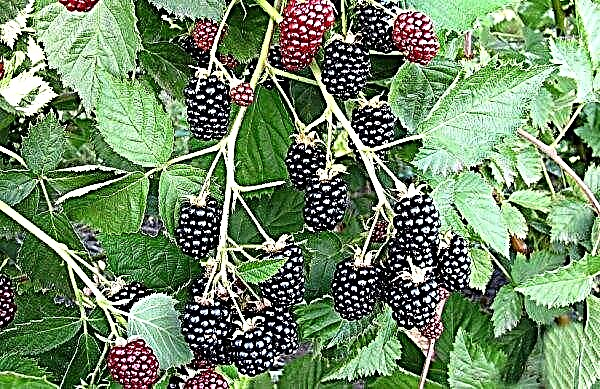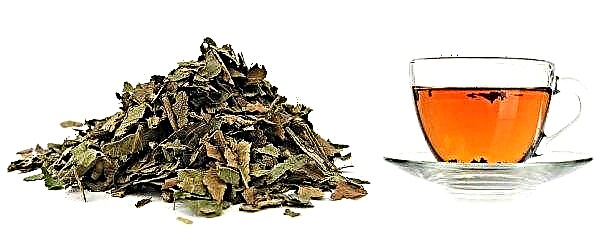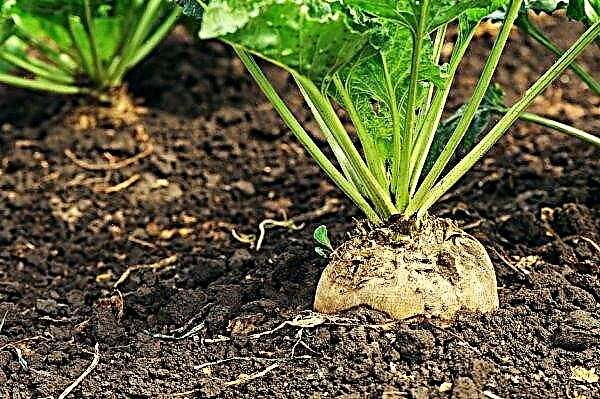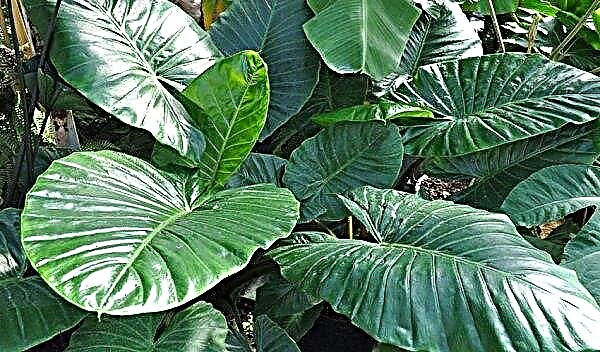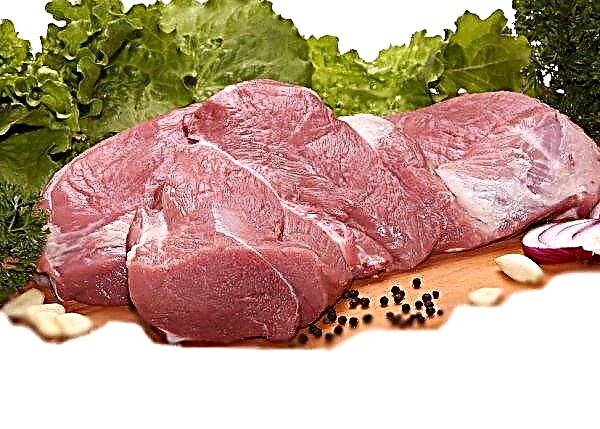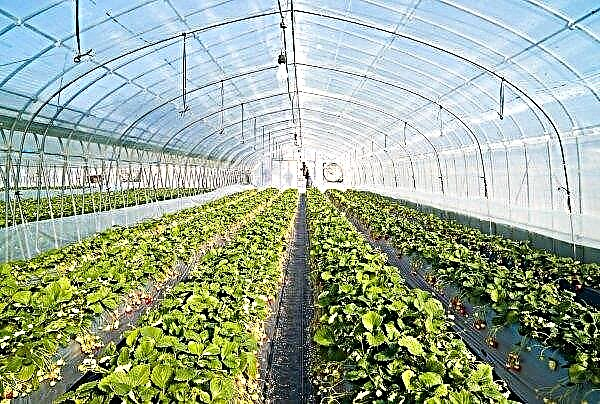Pear - a tree is very prolific, however, fortunately, its fruits are suitable not only for fresh consumption, but can also be used as raw material for preparing various dishes suitable for long-term storage. For example, a delicious and fragrant pear jam or marmalade can be an excellent and yet quite simple option to execute. This review provides the best recipes for such dishes, as well as recommendations that will help the hostess to prepare them with a minimum loss of time and effort.
Pear variety selection and preparation of ingredients
Absolutely any pears are suitable for making jams and jams, it is only important that they are ripe, fresh and, preferably, juicy.
Important! The denser the structure of the fetus, the more prolonged heat treatment it must be subjected to during the preparation process.
There is only one standard rule regarding the variety of fruits: early varieties are best consumed fresh, and in any process of harvesting (drying, freezing, canning), fruits of medium and late ripening are used, since the content of vitamins and other useful substances in such fruits much higher.
For example, among the most popular mid- and late-ripe pear varieties are:
- Belarusian;
- Bere Ardanpon;
- Bere Bosk;
- Veles;
- Thumbelina;
- Kondratyevka;
- Red-sided;
- Kuban late;
- Lyra
- Malyaevskaya late;
- Nika;
- Olivier de Serre;
- Patriotic;
- Pass Krasan;
- May Day;
- Rossoshanskaya Late;
- Saratovka;
- Miracle.
 Since both confiture and jams presuppose preliminary peeling of fruits and their subsequent small slices, the size and color of pears for the preparation of these dishes do not matter
Since both confiture and jams presuppose preliminary peeling of fruits and their subsequent small slices, the size and color of pears for the preparation of these dishes do not matter
Pears do not need serious preliminary preparation for making jam, however, despite the forthcoming peeling, the fruits must be thoroughly washed before running under running water to wash off any traces of dust, dirt, and fertilizers and pesticides that could be used to process orchards.
Did you know? To clean the pears from the peel, it is best to use not an ordinary knife, but a special vegetable peeler of the “housekeeper” type. This is not only much faster and more convenient, but also allows you to significantly reduce the loss of pulp during processing of the fetus.
The best recipes for making pear confiture
A pear is a fruit that, on the one hand, has its own rich taste and aroma, on the other hand, goes well with many other components, and this applies not only to spices, but also to various fruits, berries and even vegetables. For this reason, it is very easy to fantasize on the topic of winter harvesting of pears. Below are five recipes for making jams and jams of varying degrees of complexity and saturation, but on their basis you can, without problems, create your own culinary masterpiece.
With orange

10120 minutes
orange
200–250 g (1 pc.)
Nutritional value per 100 g:
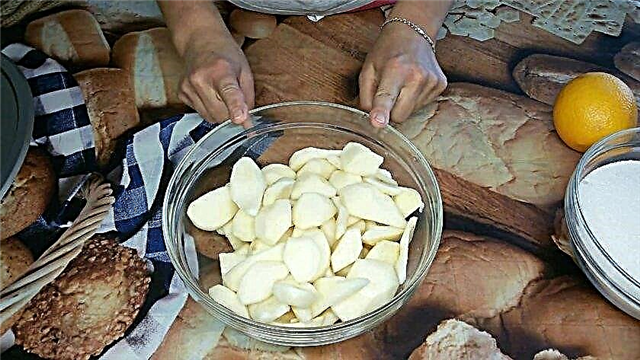 Wash the pears, peel and cut into small slices, simultaneously removing the seed chambers. Pass the pears through a meat grinder to make mashed potatoes.
Wash the pears, peel and cut into small slices, simultaneously removing the seed chambers. Pass the pears through a meat grinder to make mashed potatoes. Wash the orange, wipe it dry and gently, with a fine grater or a special knife, separate the zest (orange part of the peel), being careful not to touch the bitter white shell.
Wash the orange, wipe it dry and gently, with a fine grater or a special knife, separate the zest (orange part of the peel), being careful not to touch the bitter white shell.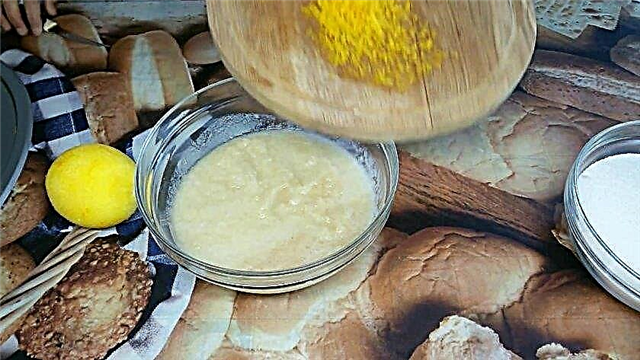 Mix the zest with mashed pear.
Mix the zest with mashed pear.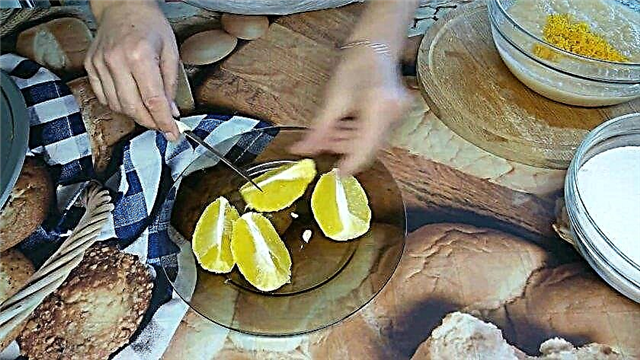 Peel the orange from the rest of the peel, cut into slices, carefully so that juice does not leak, free from the films, then pass the resulting flesh through a meat grinder, or beat with a blender.
Peel the orange from the rest of the peel, cut into slices, carefully so that juice does not leak, free from the films, then pass the resulting flesh through a meat grinder, or beat with a blender.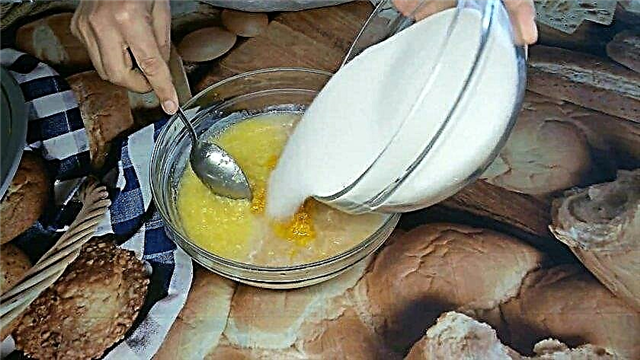 Add chopped orange and sugar to the pears, mix well, then leave the mixture for 30-60 minutes until the sugar is completely dissolved.
Add chopped orange and sugar to the pears, mix well, then leave the mixture for 30-60 minutes until the sugar is completely dissolved. Pour the future confiture into a pan with a thick bottom, put on fire, with constant stirring, bring to a boil, reduce the temperature to a minimum and simmer the mixture for 40 minutes.
Pour the future confiture into a pan with a thick bottom, put on fire, with constant stirring, bring to a boil, reduce the temperature to a minimum and simmer the mixture for 40 minutes. The foam that forms during the cooking process should be removed with a slotted spoon - this will preserve the beautiful color and taste of the dish, as well as ensure its longer storage.
The foam that forms during the cooking process should be removed with a slotted spoon - this will preserve the beautiful color and taste of the dish, as well as ensure its longer storage.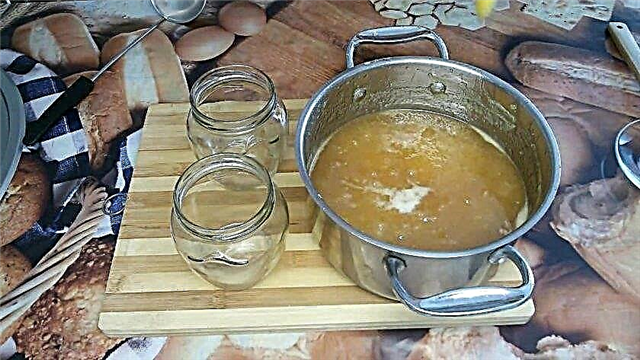 While the confiture is boiling, sterilize the jars of the appropriate volume. Pour the finished jam into hot jars, cover, roll up.
While the confiture is boiling, sterilize the jars of the appropriate volume. Pour the finished jam into hot jars, cover, roll up.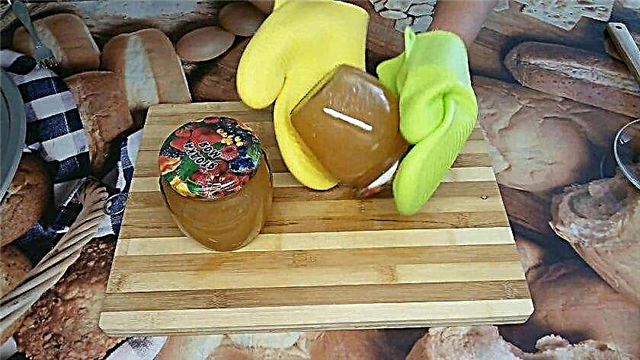 To cool completely, the jars should be left with the neck down on a flat surface.
To cool completely, the jars should be left with the neck down on a flat surface.
Video recipe
The proposed recipe is extremely simple to implement and at the same time universal. Thanks to the citrus notes, the delicacy turns out to be especially bright and aromatic and is suitable both for consumption in the “pure” form and as an ingredient for various winter desserts. As a filling for homemade pies, however, such a jam is not recommended, because due to the short cooking time, the product is not thick enough.
Did you know? The easiest way to sterilize household cans «spins» - use a microwave for these purposes. Pour a little water into the thoroughly washed dishes, and then (without the lid!) Put in the microwave for 2-3 minutes, choosing the maximum power mode.
With lemon, ginger and rosemary

10120 minutes / 24 hours
Nutritional value per 100 g:
 Peel the ginger and grate it on a fine grater (some housewives believe that it is not necessary to peel the root, but in this case the color and structure of the finished product still lose a lot).
Peel the ginger and grate it on a fine grater (some housewives believe that it is not necessary to peel the root, but in this case the color and structure of the finished product still lose a lot).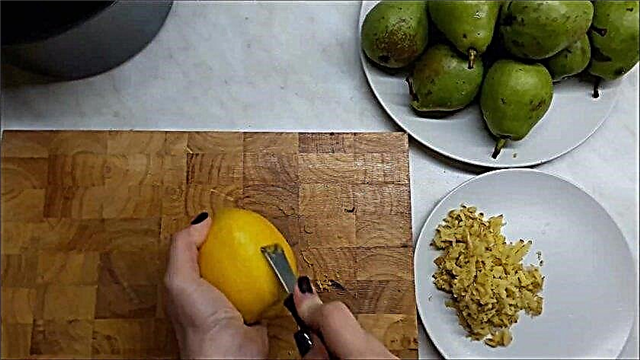 Remove the zest from the lemon (using a special knife or a fine grater).
Remove the zest from the lemon (using a special knife or a fine grater). Peel the pears, cut each fruit into 4 parts in length, remove the seed chambers, and then cut each quarter into another 2–3 parts, but across.
Peel the pears, cut each fruit into 4 parts in length, remove the seed chambers, and then cut each quarter into another 2–3 parts, but across. Cut the lemon in half, squeeze the juice and pour pears in it, then mix well right away (lemon juice will not only give an additional flavor to the dish, but also prevent the fruits from darkening).
Cut the lemon in half, squeeze the juice and pour pears in it, then mix well right away (lemon juice will not only give an additional flavor to the dish, but also prevent the fruits from darkening).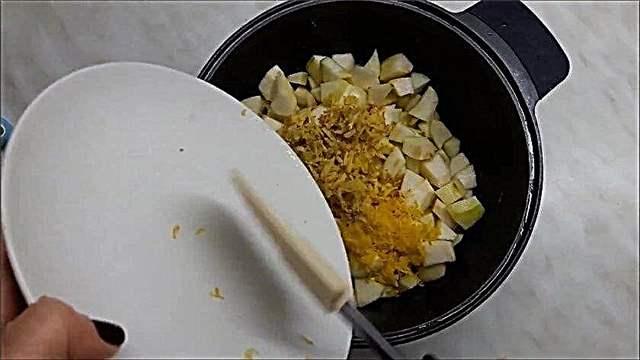 Add grated ginger, lemon zest and sugar to the pears, mix well again and leave for 120 minutes to let the pear let the juice go.
Add grated ginger, lemon zest and sugar to the pears, mix well again and leave for 120 minutes to let the pear let the juice go. Pour the future confiture into a saucepan with a thick bottom, put on fire, bring to a boil with constant stirring, remove the heat, simmer for 30 minutes, periodically removing the foam that will form on the surface.
Pour the future confiture into a saucepan with a thick bottom, put on fire, bring to a boil with constant stirring, remove the heat, simmer for 30 minutes, periodically removing the foam that will form on the surface. Remove the pan from the heat and leave to insist for a day.
Remove the pan from the heat and leave to insist for a day.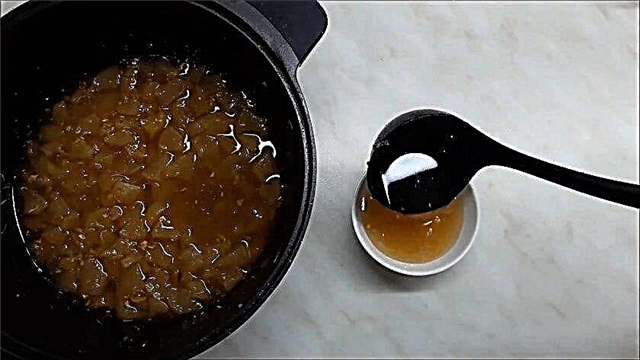 The next day, pour gelatin (it is better to take instant) with cold syrup from the confiture and leave for 10-15 minutes to swell the gelatin.
The next day, pour gelatin (it is better to take instant) with cold syrup from the confiture and leave for 10-15 minutes to swell the gelatin.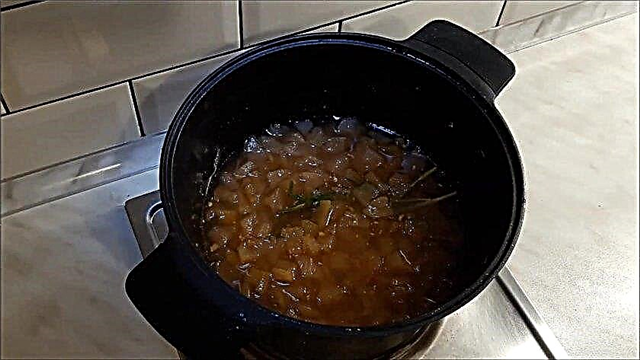 While the gelatin dissolves, put the saucepan with confiture on the fire again, put sprigs of rosemary in it and mix well, squeezing the rosemary a little with a spoon so that it gives its taste and aroma better.
While the gelatin dissolves, put the saucepan with confiture on the fire again, put sprigs of rosemary in it and mix well, squeezing the rosemary a little with a spoon so that it gives its taste and aroma better.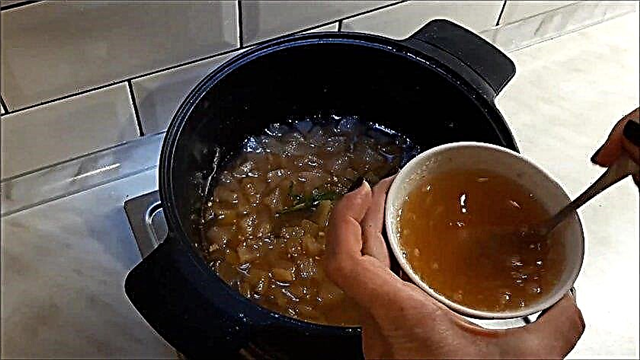 When the liquid boils, make the fire minimal, cook the dish for another 5–10 minutes, then remove the rosemary, add gelatin, mix well and immediately remove from the stove.
When the liquid boils, make the fire minimal, cook the dish for another 5–10 minutes, then remove the rosemary, add gelatin, mix well and immediately remove from the stove.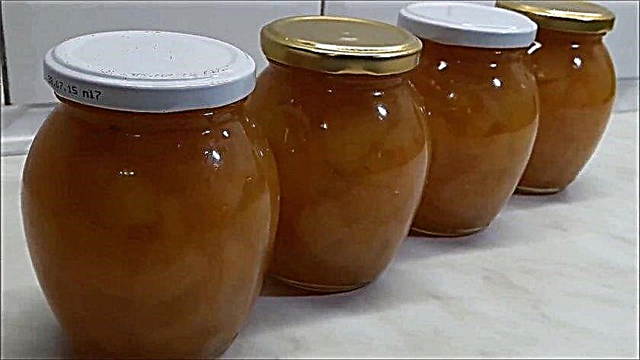 Pour the finished treat into pre-sterilized jars, cover and roll up. Turn the cans upside down and leave to cool completely.
Pour the finished treat into pre-sterilized jars, cover and roll up. Turn the cans upside down and leave to cool completely.
Despite the presence of gelatin in the recipe, the confiture, as in the first recipe, is not too thick. As a filling for pies, this option of pear billet can be used if only pieces of fruit are selected, without “gravy”.Important! Gelatin should never be boiled: because of this, its gelling properties decrease or disappear altogether!
Video recipe
With coffee

690 minutes
Nutritional value per 100 g:
- Wash the pears, peel, remove the seed chambers and cut into a cube with a side of about 1 cm.
- Put the pears in a saucepan with a thick bottom, add sugar, mix and leave for 1.5–2 hours so that the fruits let juice.
- Put the pears on the fire and bring to a boil.
- Remove the pan from the heat, discard the pears in a colander, pour the syrup into a separate container, and then return it to the same pan in which the pears were cooked.
- Boil the syrup without fruits for 3-5 minutes, so that it thickens a little (pears are removed so that they do not lose their density during the cooking process).
- Return the pears to the syrup and cook for another 5 minutes.
- Brew strong coffee: pour freshly ground beans into a cezve, add water, bring to the formation of lush foam, remove from heat, let it brew, then strain.
- Repeat the procedure with discarding pears: boil the syrup without fruits for 3 minutes, with fruits for 5 minutes. In total, therefore, it is necessary to perform three consecutive cooking phases.
- While the confiture is boiling, sterilize the jars and lids (approximately 3 jars with a volume of 250 ml will be needed for a given amount of ingredients).
- Put the pears in a colander, boil the syrup for 5 minutes and add strained coffee, cinnamon, coffee beans and mix well.
- Return the pears to the flavored syrup, boil for another 3 minutes from the moment of boiling.
- Pour 1 tbsp into each jar. l brandy, fill the jars with hot confiture, cover with lids, roll up and leave to cool upside down.

Cognac in this recipe can be replaced with another strong and aromatic alcoholic drink, for example, Calvados or rum is perfect.
With port and nutmeg

6120 minutes
nutmeg (powder)
1/6 tsp
Nutritional value per 100 g:
- Cut the lemon in half, squeeze the juice.
- Wash, peel, remove the seed chambers, cut into small cubes.
- Mix the port with sugar, put on fire, bring to a boil, boil for 15-20 minutes, until the solution becomes thicker.
- Add pears to the wine syrup, bring to a boil, remove from heat and let cool to room temperature.
- After a while, put the confiture on the fire again, after boiling simmer, stirring constantly, for 5 minutes.
- Pour jam into hot sterilized jars, cover, roll up, turn over and leave to cool completely.
Important! Nutmeg has a very sharp and rich aroma, so you need to add it to the dish in very small quantities, otherwise nothing will be felt in the finished confiture, except for this spice.
Due to the presence of alcohol in the syrup, this recipe requires a minimum heat treatment time for pears, which not only allows you to cook the dish very quickly, but also preserves the maximum useful substances in the fruits.
Video recipe
Pear jam with cloves

660 minutes
Nutritional value per 100 g:
- Peel the pears, cut each fruit into 4 parts, remove the core.
- Pass the fruits through a meat grinder to form a smoothie, or simply chop as finely as possible.
- Pour the pears in a thick-walled dish, pour sugar, add water, cloves and mix well. Adding water allows you to start cooking immediately, without waiting for the fruit to start juice.
- Put the jam on the fire, bring to a boil, reduce the temperature and simmer with constant stirring for 20-25 minutes, until the mass becomes more viscous.
- Pour jam into prepared sterilized jars, cover, roll up, leave to cool upside down.
Important! If the excess of nutmeg in the dish simply interrupts other flavors and violates the balance of taste, then cloves added in large quantities can make the product literally inedible, and the smell that this spice has is so specific that many people cannot tolerate it even in small doses .
Video recipe
Terms and conditions for storage of pear blanks
From the point of view of standard storage rules, sweet pear billets are no different from other homemade canned goods. Subject to the recipe and preparation technology, it is possible to store such preparations for a year at room temperature (it is not necessary to keep them in the cellar or refrigerator). Pear jams are not prone to bloated caps, fermentation or mold coating., however, it is advisable to allocate shelves for the installation of cans with winter supplies, which are in places protected from light, drafts and sudden changes in temperature (for example, balconies or kitchens are less suitable for this purpose than a pantry).
Did you know? The idea of the poisonous properties of jam with pits is very exaggerated, because, firstly, the content of amygdalin in the fruit kernel is quite small, and secondly, hydrocyanic acid is neutralized by sugar (for this reason, the poisoning of Grigory Rasputin with potassium cyanide cakes - potassium salt of hydrocyanic acid - was originally a bad idea).
Despite the fact that the recommended shelf life of homemade jams is one year, in reality they are suitable for use even after a longer period of time. The defining argument here is that pears in all the recipes listed above are cooked without seeds (seeds), while this part of the fetus, due to the presence of a small amount of hydrocyanic acid in it, and to be more precise, amygdalin glycoside, which is its predecessor, is considered the most dangerous in sweet preservation.

However, experienced housewives still avoid preparing supplies for several years to come. Much it is more practical to determine the total volume of harvests so that they are enough until the ripe fresh seasonal fruits, and for the next winter to make jam from the fruits of a new crop.
In addition, you need to know that in some cases, jams, including jams and jams, still need to be stored in the refrigerator. This applies to cases when the hostess, wanting to save her time and at the same time change the characteristics of the finished product to her taste (make it less sweet and, accordingly, high-calorie, keep more vitamins in raw materials, etc.) departs from standard technology.
Did you know? The average life expectancy of a pear tree is about a hundred years, and it bears fruit for about half of this period. However, there are exceptions, for example, in Yalta, a wild-growing specimen of a pear is preserved, whose age is more than 350 years, and each year it gives more than five hundred kilograms of fruit.
There are three main criteria, in the presence of which a homemade blank has a good chance of fermenting if you do not put it in a cellar or refrigerator. These criteria are:
- lack of a seaming machine (many housewives pour jam into clean jars and cover with ordinary plastic lids);
- low sugar in the recipe (without jamming, you can store jams in which the sugar content is at least 1.2 in relation to fruits (1 kg of 200 g of sugar should fall per 1 kg of peeled pears);
- short cooking time (so that the jam could not be preserved, the fruit should be boiled in large quantities of sugar for several hours, as our grandmothers did. However, the taste and nutritional properties of such a product are absolutely incomparable with modern “five-minute” jams in which not only the aroma of living fruit, but also a large number of vitamins contained in it).

It is difficult to find a fruit that is more suitable for home canning than a pear. In these fruits, there is not only a delicate taste and aroma that creates an excellent basis for various additives that can literally "string" on each other, creating a variety of different culinary fantasies, but also a large number of pectins that provide jams and confiture fine natural gelling.Coffee, cognac, port, ginger, rosemary, citrus fruits - these unusual ingredients are not limited to pear jams. Apple, plum, honey, pumpkin, banana and many other products give equally interesting combinations with a pear - the field for creativity here is truly vast.

 Wash the pears, peel and cut into small slices, simultaneously removing the seed chambers. Pass the pears through a meat grinder to make mashed potatoes.
Wash the pears, peel and cut into small slices, simultaneously removing the seed chambers. Pass the pears through a meat grinder to make mashed potatoes. Wash the orange, wipe it dry and gently, with a fine grater or a special knife, separate the zest (orange part of the peel), being careful not to touch the bitter white shell.
Wash the orange, wipe it dry and gently, with a fine grater or a special knife, separate the zest (orange part of the peel), being careful not to touch the bitter white shell. Mix the zest with mashed pear.
Mix the zest with mashed pear. Peel the orange from the rest of the peel, cut into slices, carefully so that juice does not leak, free from the films, then pass the resulting flesh through a meat grinder, or beat with a blender.
Peel the orange from the rest of the peel, cut into slices, carefully so that juice does not leak, free from the films, then pass the resulting flesh through a meat grinder, or beat with a blender. Add chopped orange and sugar to the pears, mix well, then leave the mixture for 30-60 minutes until the sugar is completely dissolved.
Add chopped orange and sugar to the pears, mix well, then leave the mixture for 30-60 minutes until the sugar is completely dissolved. Pour the future confiture into a pan with a thick bottom, put on fire, with constant stirring, bring to a boil, reduce the temperature to a minimum and simmer the mixture for 40 minutes.
Pour the future confiture into a pan with a thick bottom, put on fire, with constant stirring, bring to a boil, reduce the temperature to a minimum and simmer the mixture for 40 minutes. The foam that forms during the cooking process should be removed with a slotted spoon - this will preserve the beautiful color and taste of the dish, as well as ensure its longer storage.
The foam that forms during the cooking process should be removed with a slotted spoon - this will preserve the beautiful color and taste of the dish, as well as ensure its longer storage. While the confiture is boiling, sterilize the jars of the appropriate volume. Pour the finished jam into hot jars, cover, roll up.
While the confiture is boiling, sterilize the jars of the appropriate volume. Pour the finished jam into hot jars, cover, roll up. To cool completely, the jars should be left with the neck down on a flat surface.
To cool completely, the jars should be left with the neck down on a flat surface. Peel the ginger and grate it on a fine grater (some housewives believe that it is not necessary to peel the root, but in this case the color and structure of the finished product still lose a lot).
Peel the ginger and grate it on a fine grater (some housewives believe that it is not necessary to peel the root, but in this case the color and structure of the finished product still lose a lot). Remove the zest from the lemon (using a special knife or a fine grater).
Remove the zest from the lemon (using a special knife or a fine grater). Peel the pears, cut each fruit into 4 parts in length, remove the seed chambers, and then cut each quarter into another 2–3 parts, but across.
Peel the pears, cut each fruit into 4 parts in length, remove the seed chambers, and then cut each quarter into another 2–3 parts, but across. Cut the lemon in half, squeeze the juice and pour pears in it, then mix well right away (lemon juice will not only give an additional flavor to the dish, but also prevent the fruits from darkening).
Cut the lemon in half, squeeze the juice and pour pears in it, then mix well right away (lemon juice will not only give an additional flavor to the dish, but also prevent the fruits from darkening). Add grated ginger, lemon zest and sugar to the pears, mix well again and leave for 120 minutes to let the pear let the juice go.
Add grated ginger, lemon zest and sugar to the pears, mix well again and leave for 120 minutes to let the pear let the juice go. Pour the future confiture into a saucepan with a thick bottom, put on fire, bring to a boil with constant stirring, remove the heat, simmer for 30 minutes, periodically removing the foam that will form on the surface.
Pour the future confiture into a saucepan with a thick bottom, put on fire, bring to a boil with constant stirring, remove the heat, simmer for 30 minutes, periodically removing the foam that will form on the surface. Remove the pan from the heat and leave to insist for a day.
Remove the pan from the heat and leave to insist for a day. The next day, pour gelatin (it is better to take instant) with cold syrup from the confiture and leave for 10-15 minutes to swell the gelatin.
The next day, pour gelatin (it is better to take instant) with cold syrup from the confiture and leave for 10-15 minutes to swell the gelatin. While the gelatin dissolves, put the saucepan with confiture on the fire again, put sprigs of rosemary in it and mix well, squeezing the rosemary a little with a spoon so that it gives its taste and aroma better.
While the gelatin dissolves, put the saucepan with confiture on the fire again, put sprigs of rosemary in it and mix well, squeezing the rosemary a little with a spoon so that it gives its taste and aroma better. When the liquid boils, make the fire minimal, cook the dish for another 5–10 minutes, then remove the rosemary, add gelatin, mix well and immediately remove from the stove.
When the liquid boils, make the fire minimal, cook the dish for another 5–10 minutes, then remove the rosemary, add gelatin, mix well and immediately remove from the stove. Pour the finished treat into pre-sterilized jars, cover and roll up. Turn the cans upside down and leave to cool completely.
Pour the finished treat into pre-sterilized jars, cover and roll up. Turn the cans upside down and leave to cool completely.